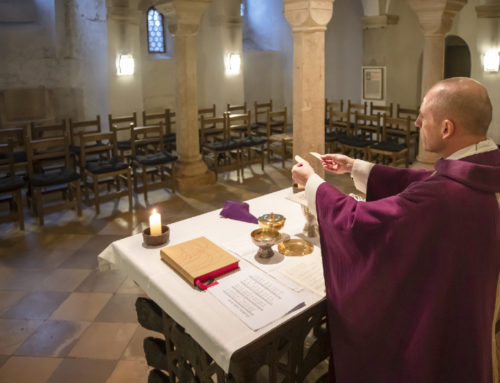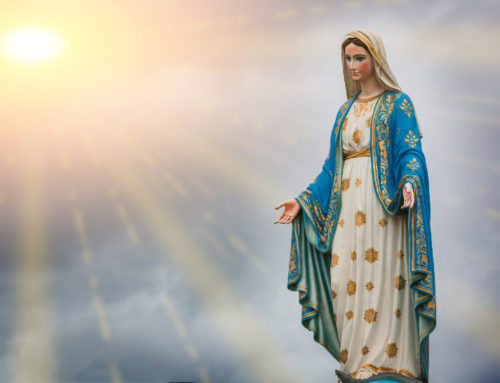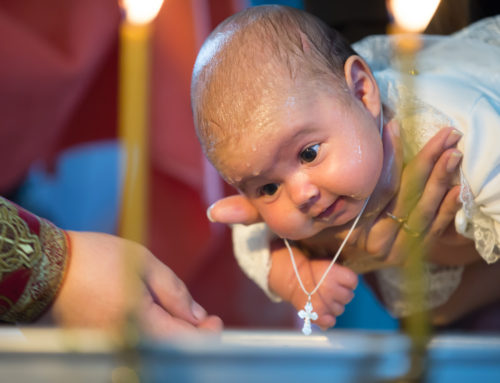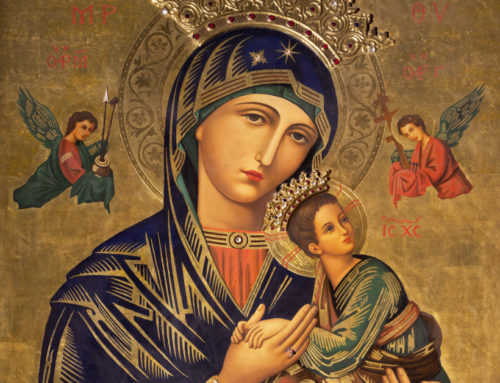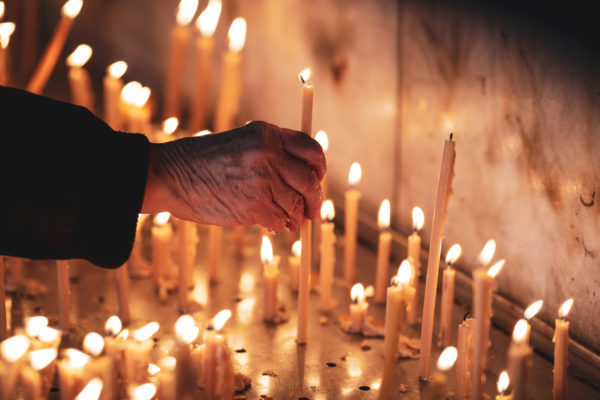
Details with the hands of an old woman lighting a candle inside a christian orthodox church in Romania.
The pastor of the Melkite Church near me is an archimandrite – what is that?
The title of Archimandrite is an honorary title that is granted to a priest who exercises authority over a monastery but, in recent years, has been granted in much the same way as the Latin Church uses the title of Monsignor. That is, it is given in recognition of exemplary service to the church. In the Byzantine tradition, the archimandrite is recognized by the use of the monastic veil. Note that the title of Hegumen is used more commonly to represent one who has authority over a monastery. In the West, an abbot is the head of a monastery or abbey.
What other titles do Eastern Catholic priests receive?
This is a complex question. If we begin with the Byzantine tradition, the honorific titles are Stavrophore (cross-bearing), Archimandrite, and, on very rare occasions, Exarch. Some jurisdictions also have the title Archpriest and even Mitered Archpriest (this latter has the right to wear a miter just like that worn by a bishop).
for the sake of completeness, the title of Stavrophore also refers to one of the three monastic grades that are granted to monks who are not priests. The other two grades are Rassophore (the first level after a novice formally enters into the monastic life) and Great Schema (the highest-level monk).
The Chaldean, Maronite, and Syrian Churches grant the title of Chorbishop to select priests who then function in a limited fashion as bishops. A chorbishop will wear the insignia of a bishop and may be called “Bishop” or “Father”.
Although the question was about priests, there are also special titles that Eastern Catholic deacons may receive. These are, specifically, Archdeacon and Protodeacon. Technically, an archdeacon is a monastic while a protodeacon is simply one belonging to the secular or diocesan clergy.
Who appoints Eastern Catholic bishops?
This depends on the structure of the church. In patriarchal churches the synod of bishops in communion with the patriarch selects their own bishops from a list of candidates approved by Rome. Should a man not on that list be elected, his name must be sent to Rome for confirmation. In all other cases, a list of suitable candidates is sent to Rome, and the pope selects the bishop just as he does with the Latin Church.
On a separate but related note, only the pope can establish or remove a diocese or eparchy. So, in this sense, the Eastern Churches are as dependent upon the pope as is the Latin Church.
Do Eastern Catholics have cardinals? Do they have monsignors?
Yes.
Okay, that was probably not a very informative answer! The fuller answer is that there are some Eastern Catholic Churches that have clergy with these titles. The title of Monsignor is not an Eastern title and, in general, is no longer given in the Byzantine tradition, although it seems to be fully integrated into the Maronite Church. There are, at the time the source for this post was written, three Eastern Catholic cardinals. The Maronite Patriarch is a cardinal, the head of the Congregation for Eastern Churches is a cardinal, and the head of the Ukrainian Church is a cardinal. The cardinals vote in conclave to elect a pope.
Excerpt from Faulk, Edward. 101 Questions and Answers on Eastern Catholic Churches. (Paulist Press: Mahwah, NJ) 2007.

